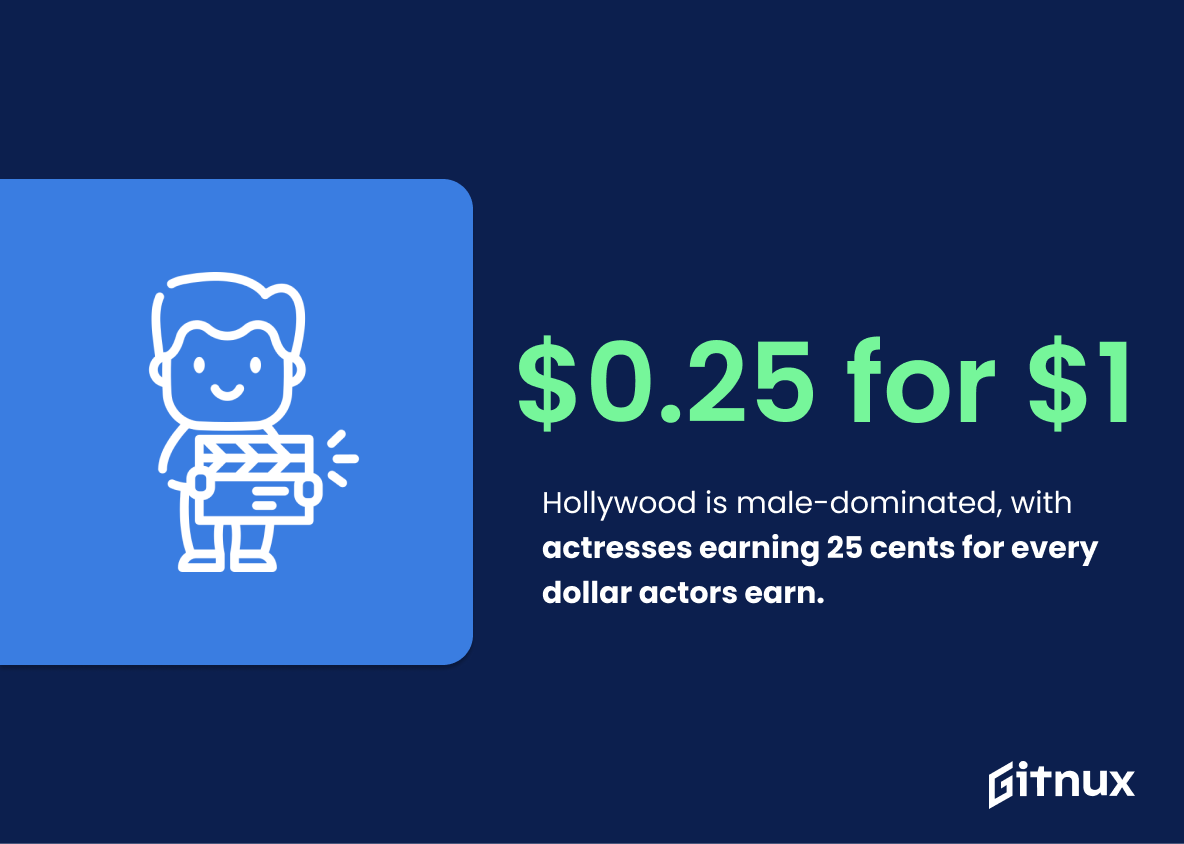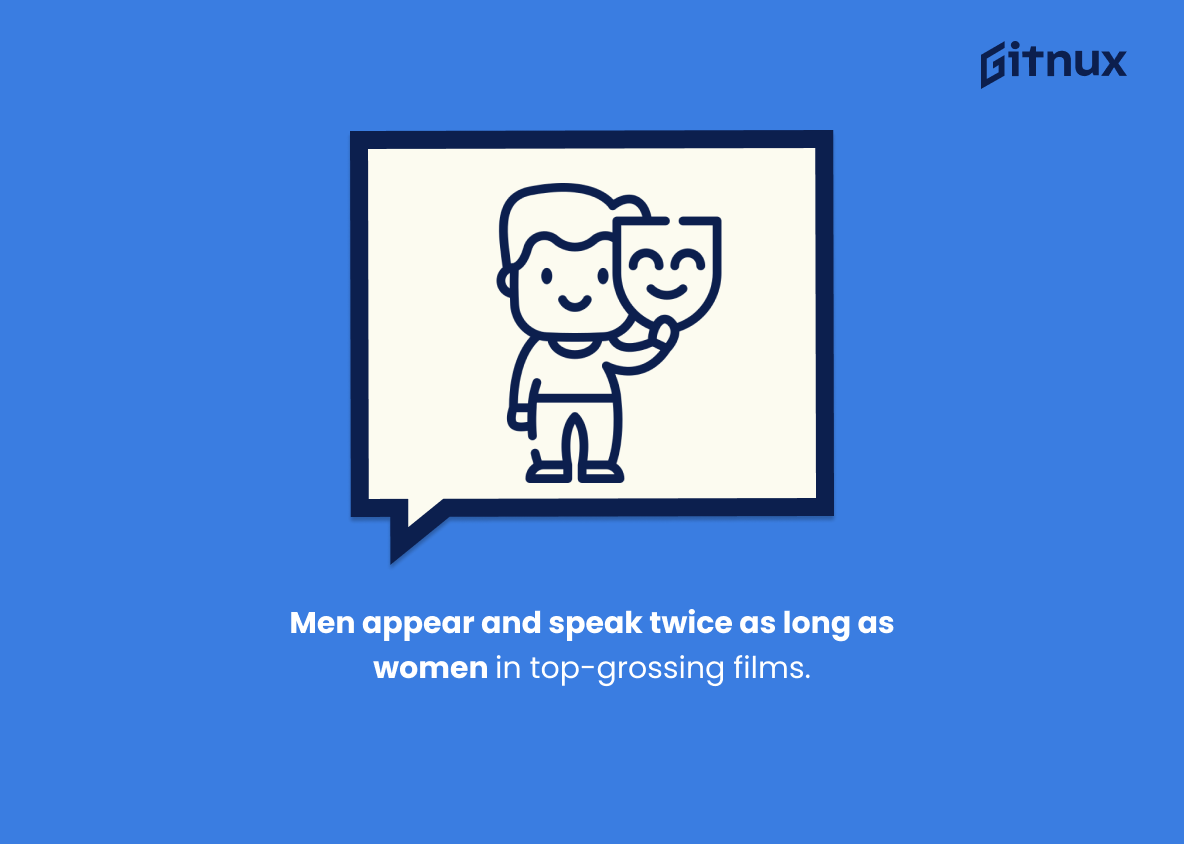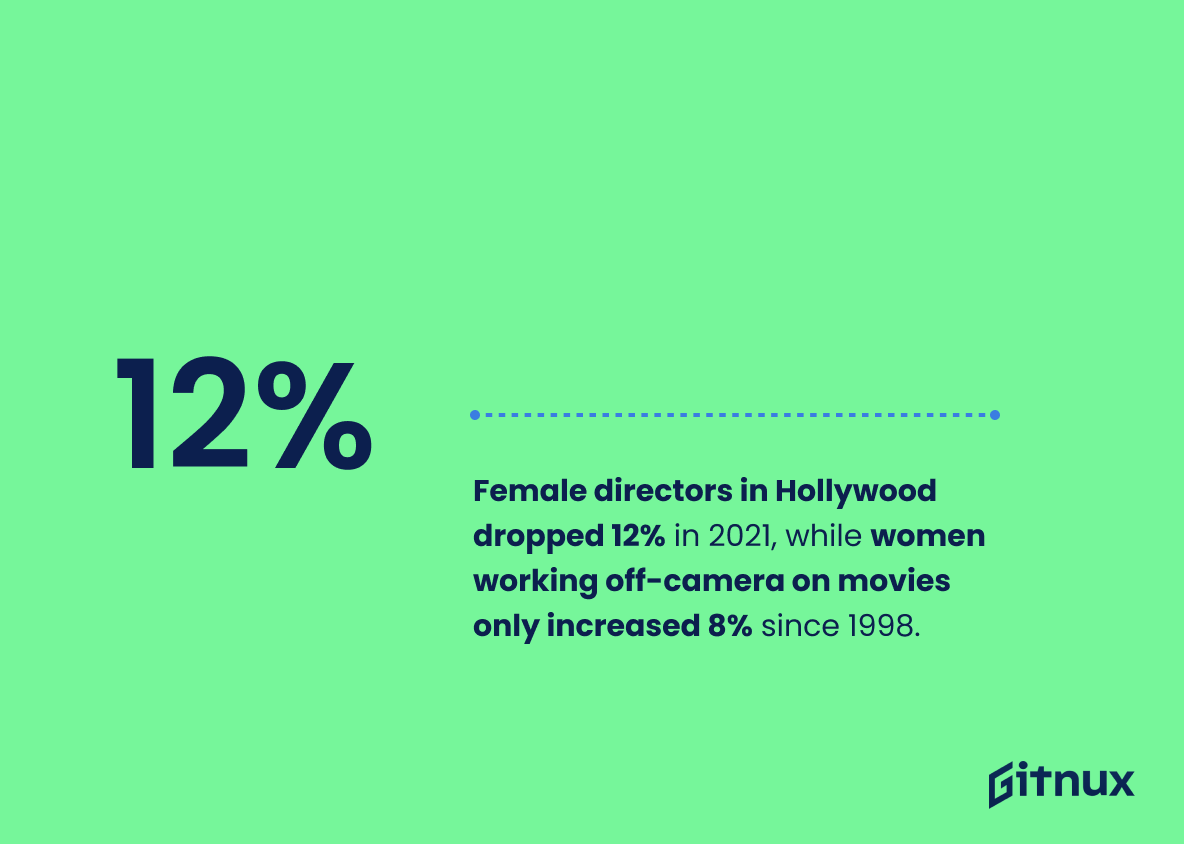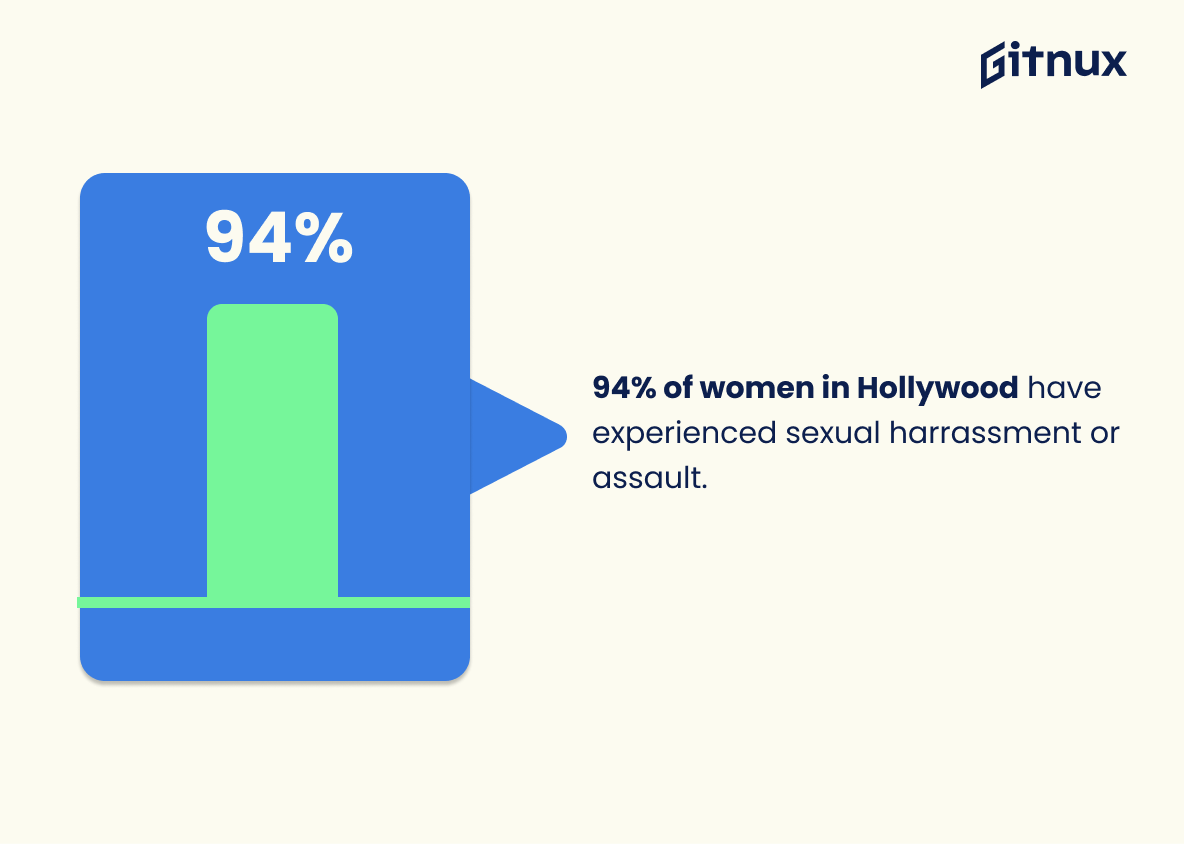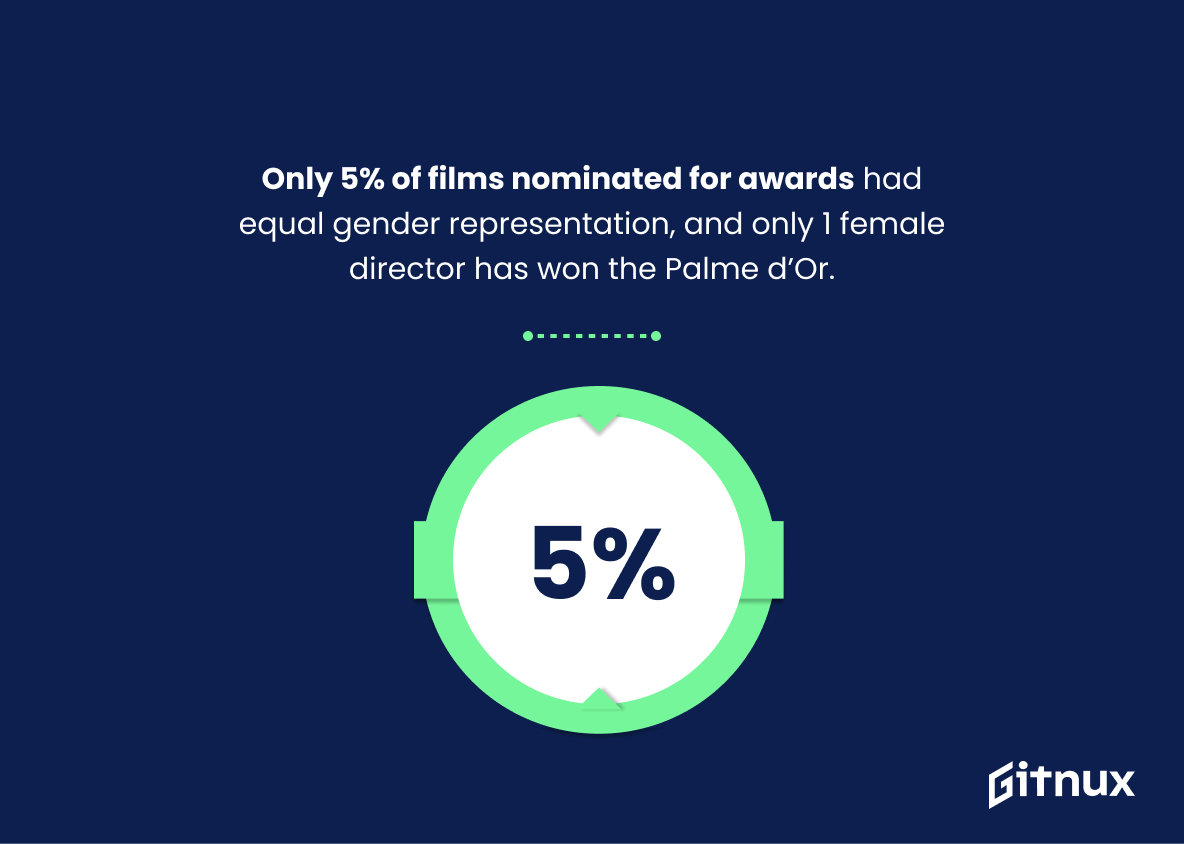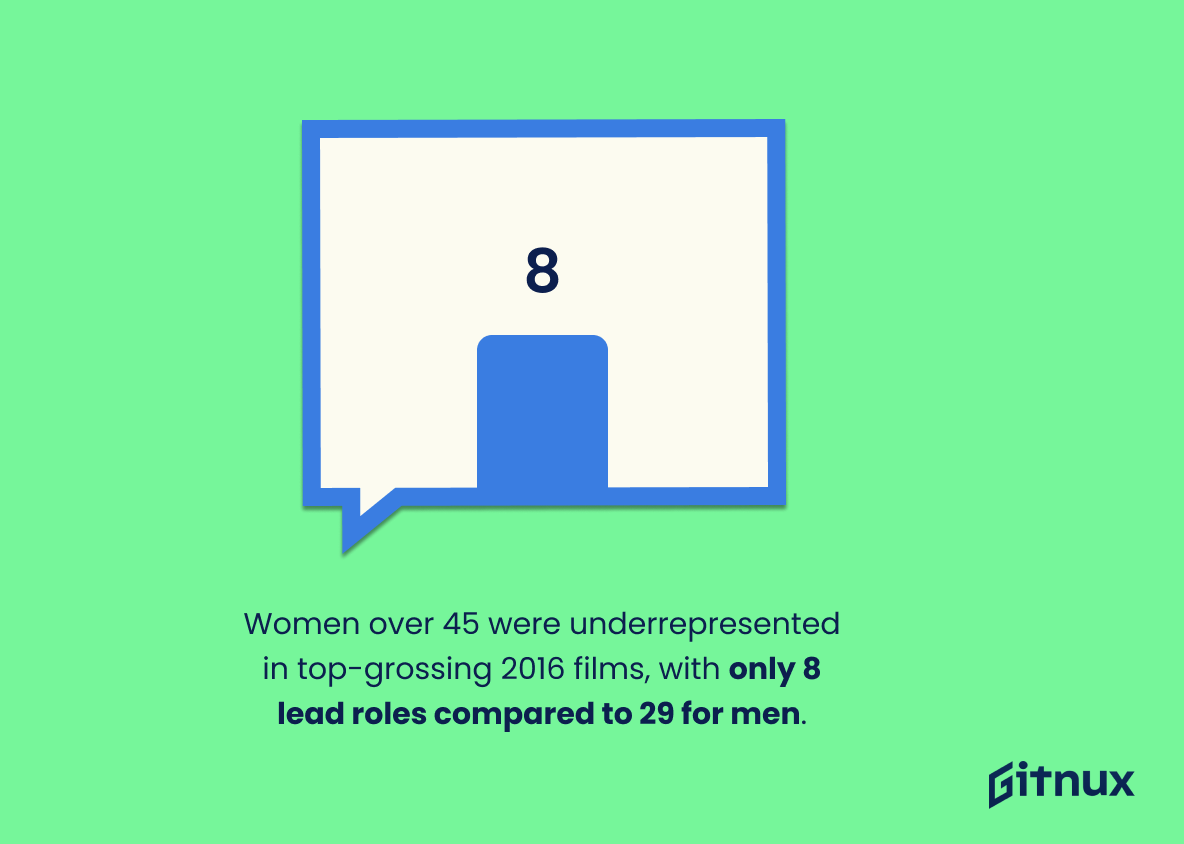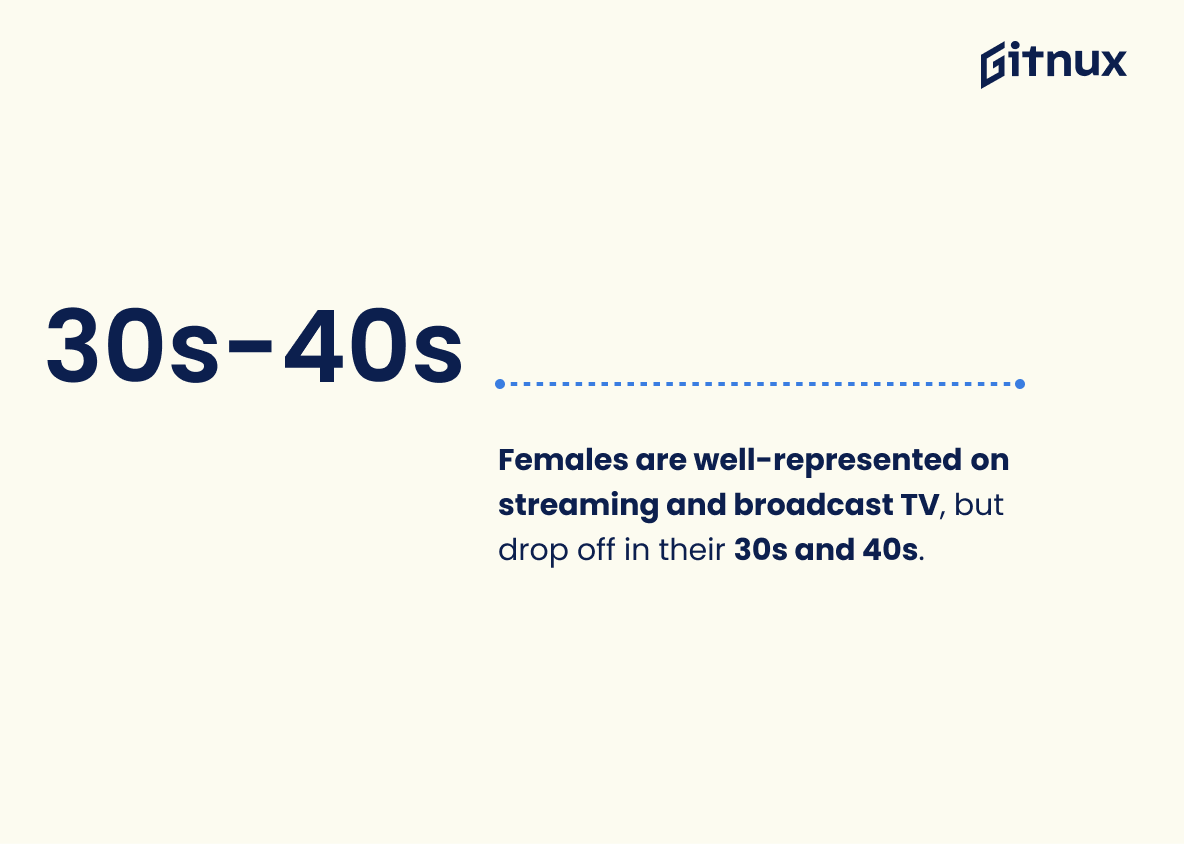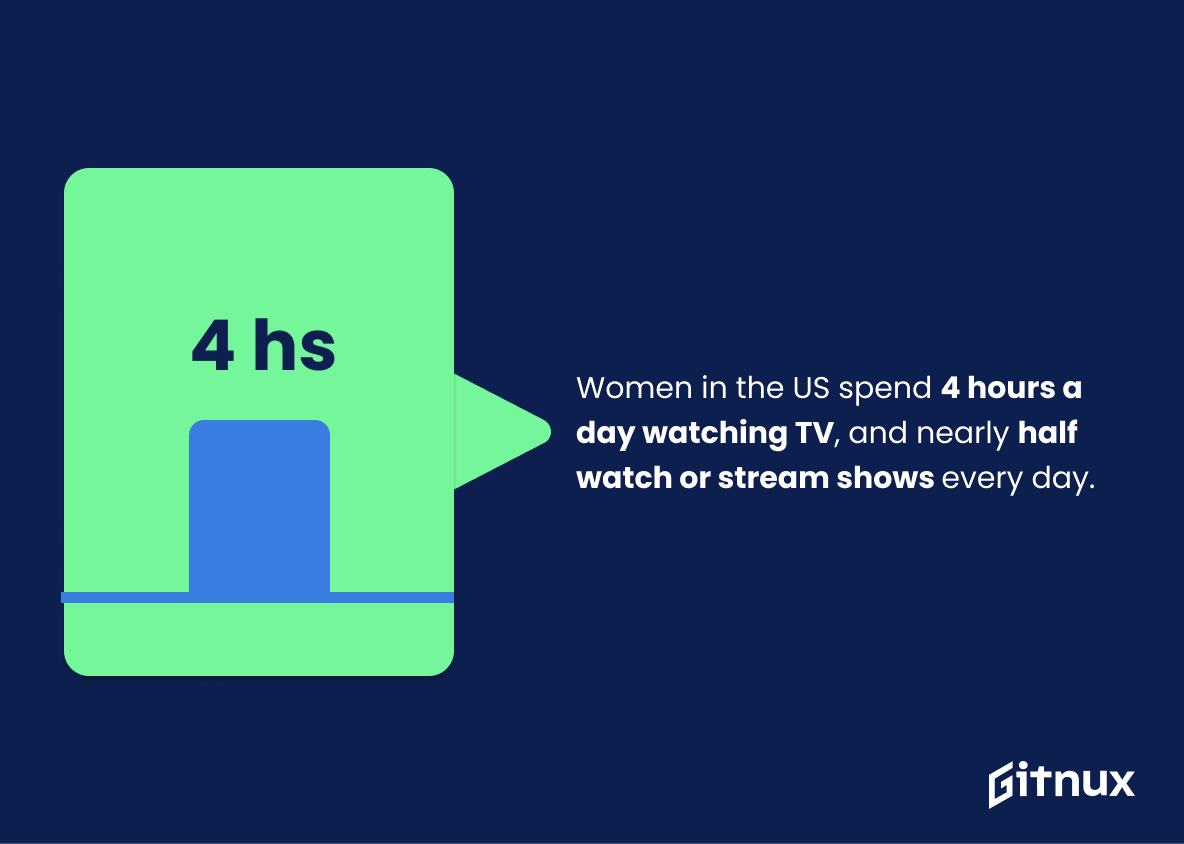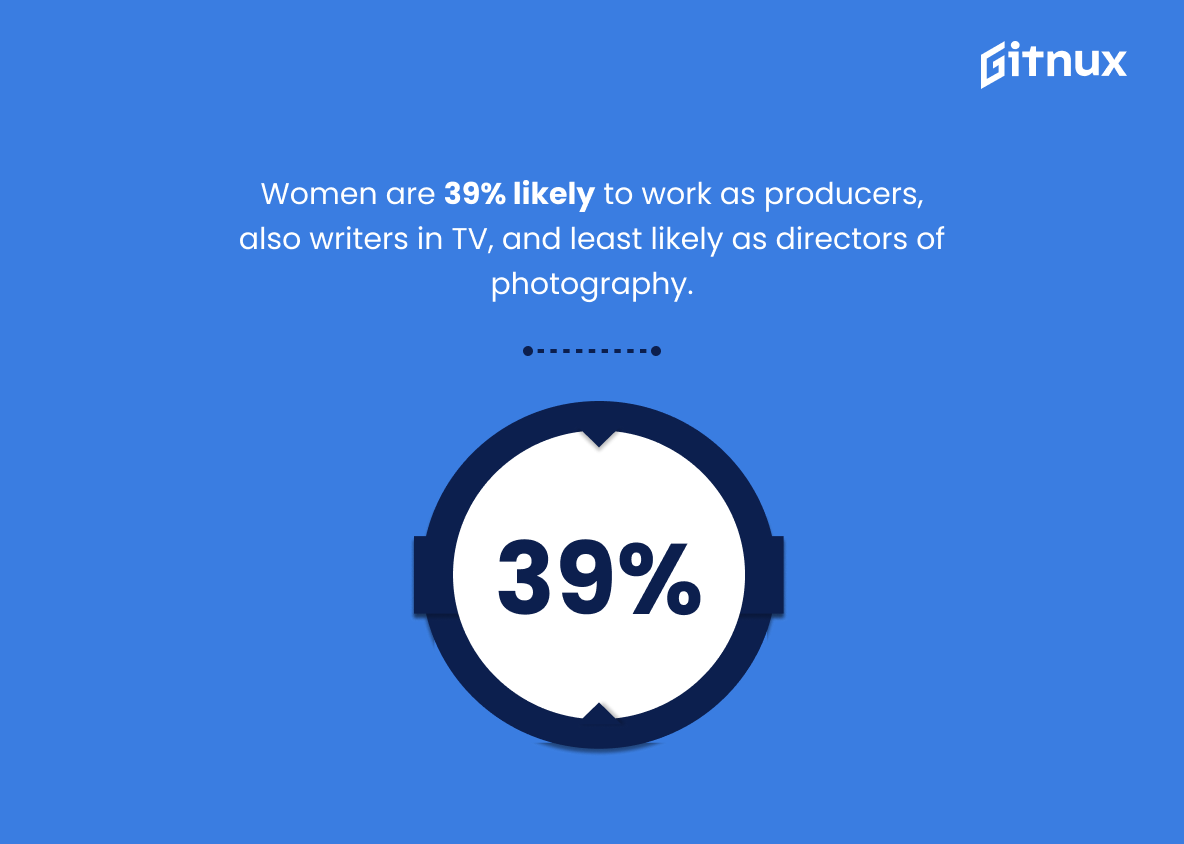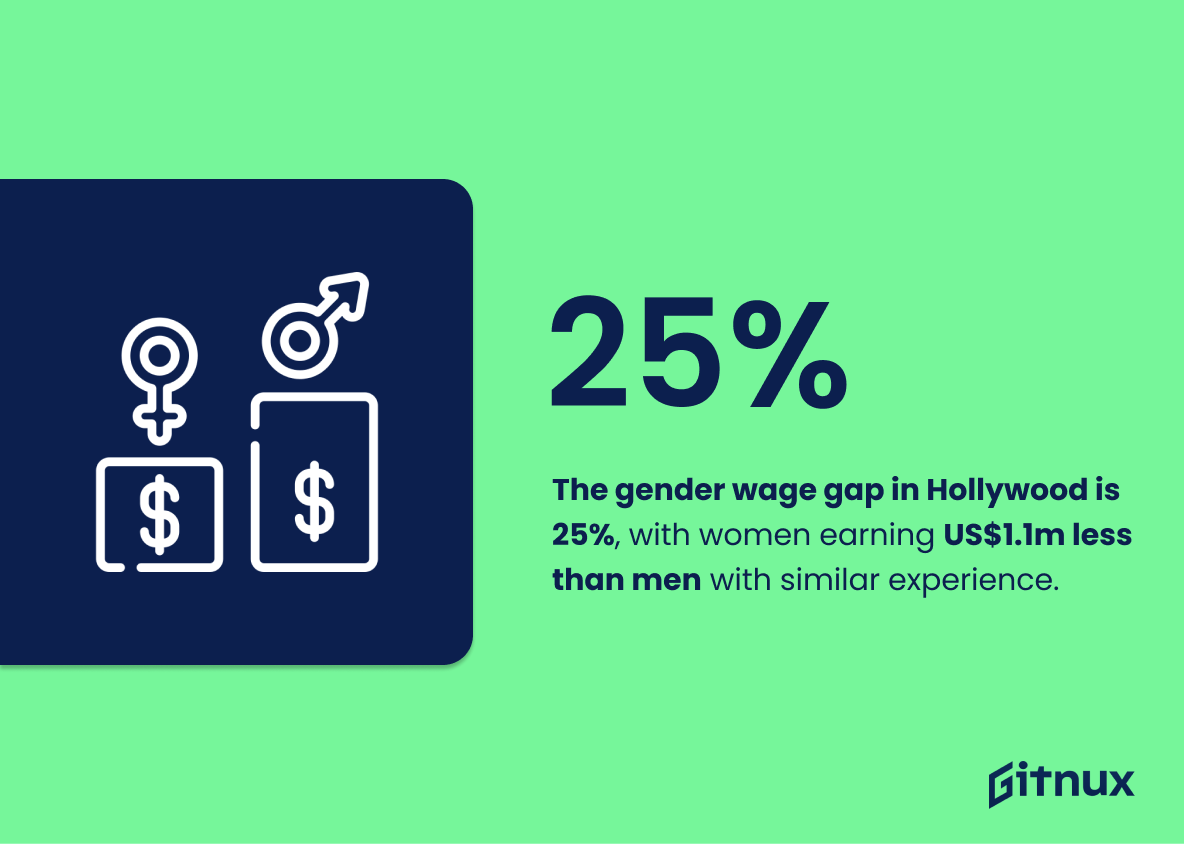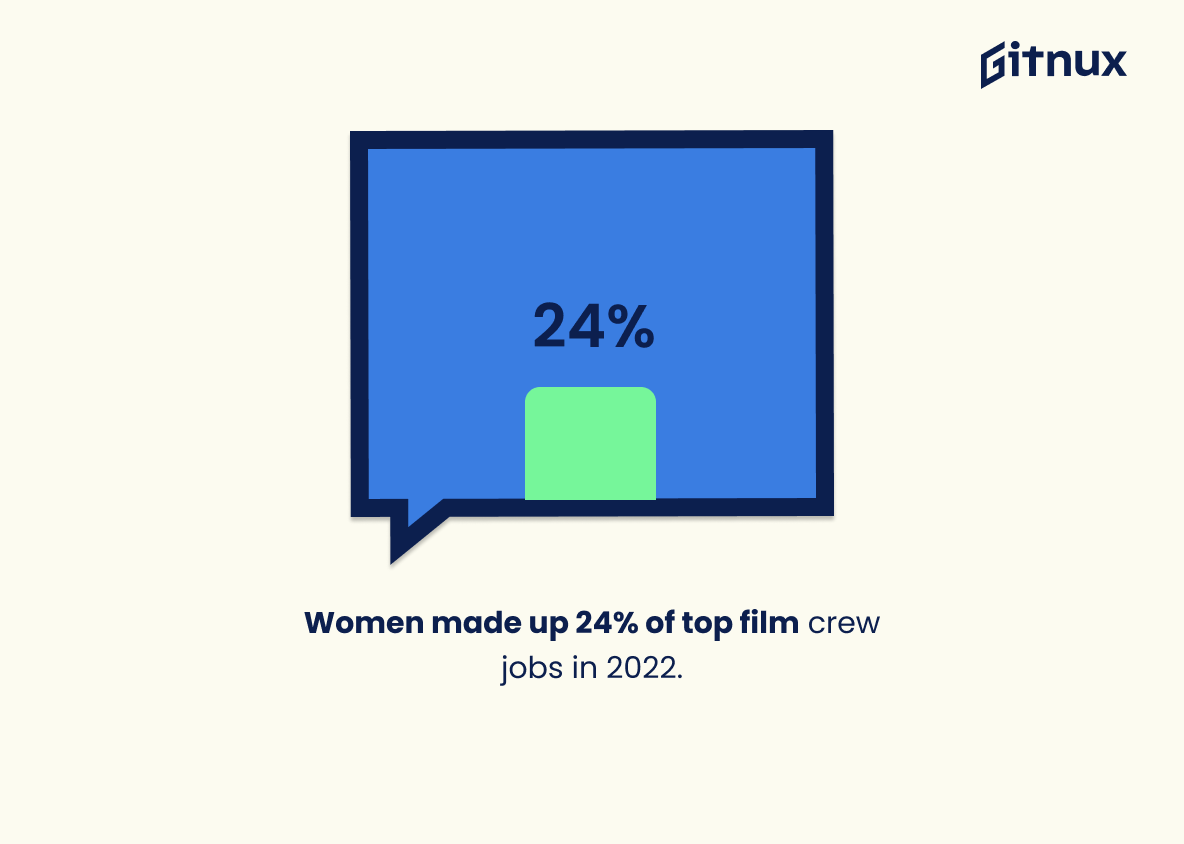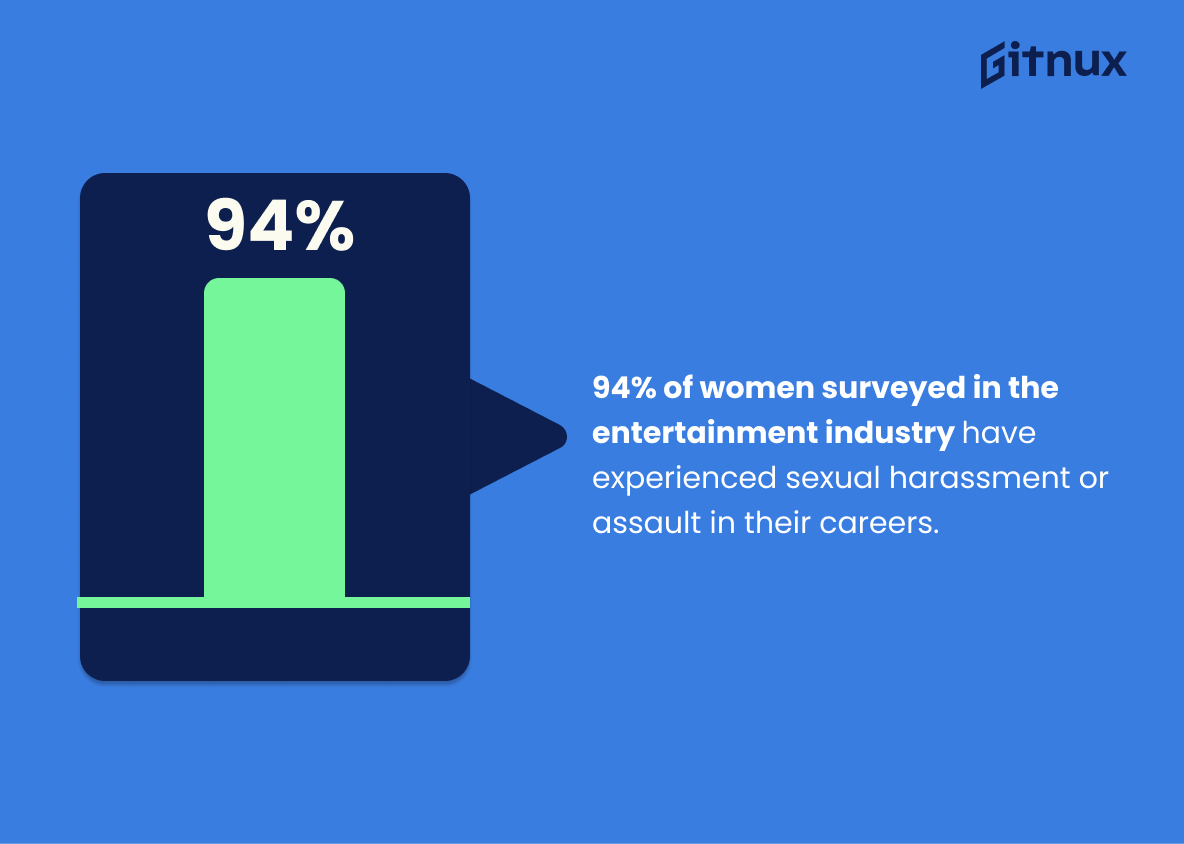Hollywood is one of the most influential industries in the world, and it has been for decades. Unfortunately, it is also an industry that is rife with sexism. From the pay gap to the lack of representation of women in lead roles, the statistics on sexism in Hollywood are staggering.
In this blog post, we will explore the statistics on sexism in Hollywood and discuss what needs to be done to combat it. We will also look at some of the positive changes that have been made in recent years and how we can continue to push for progress.
Sexism in Hollywood: The Most Important Statistics
Only 5% of films nominated for film awards between 1990-2018 had equal nomination consisting of men and women.
The gender wage gap in Hollywood is 25%, with women earning US$1.1m less than men with similar experience.
Sexism in Hollywood: Statistics Overview
The male to female ratio in Hollywood is 2.3 to 1 and actresses earn 24.8 cents for every dollar their male counterparts earn.
This statistic demonstrates the prevalence of sexism in Hollywood, as it has not changed in over half a century.
This inequality is further demonstrated by the fact that men appear and speak twice as long as their female counterparts in the 100 highest grossing movies of 2015.
This statistic matters because it highlights the systemic inequality that exists in Hollywood and the entertainment industry as a whole, which devalues women and their contributions.
The number of female directors in Hollywood dropped by 12% in 2021, while the number of women working off-camera on movies only increased by 8% from 1998 to 2021.
This statistic matters in the context of sexism in Hollywood because it highlights that there has been very little progress in bridging the gender gap in the industry. This statistic is a reminder that there is still much work to be done in order to create a more equal and equitable industry.
94% of women in Hollywood have experienced sexual harrassment or assault.
This statistic is important because it highlights the prevalence of sexism in Hollywood and the prevalence of sexual harrassment and assault against women in the industry. It also highlights the need for further action to be taken to protect women in Hollywood and to ensure that they are not subjected to such treatment.
Only 5% of films nominated for film awards between 1990-2018 had equal nomination consisting of men and women, and only 1 female director has ever won the Palme d’Or, indicating a clear gender disparity in Hollywood.
This matters because it shows that there is a systemic bias in Hollywood towards male directors, and that female directors are not given the same opportunities and recognition as their male counterparts.
56 women appeared for every 100 men in over two dozen Hollywood films, with female characters being presented in the home 28% more than men and having less character development than male counterparts.
This statistic matters in the context of sexism in Hollywood because it shows a clear discrepancy between the representation of men and women in films, with women being underrepresented and given less character development than men. This highlights the prevalence of sexism in Hollywood and the need for greater representation and development of female characters.
Women over the age of 45 were significantly underrepresented in the highest grossing films of 2016, with only 8 out of 34 lead roles compared to 29 for men.
This matters in the context of sexism in Hollywood because it shows that older women are being excluded from leading roles, while older men are still being cast in them.
After the MeToo movement, 40% more female writers were hired by producers associated with Harvey Weinstein. This statistic is important because it shows that the MeToo movement had a positive impact on the hiring of female writers in Hollywood, which is an industry that has historically been dominated by men.
This statistic is evidence that the MeToo movement was successful in raising awareness of sexism in Hollywood and encouraging more equitable hiring practices.
The MeToo movement has increased awareness of sexism in Hollywood, however the number of women working in the sector is still rising slowly. This matters because it shows that the MeToo movement has had an impact on the industry, but there is still a long way to go before gender equality is achieved.
Females comprised 50% of major characters on streaming programmes and 48% on broadcast network programmes, and had a higher percentage of speaking roles than broadcast programmes, but the percentage of female characters in their 30’s and 40’s plummeted.
This matters in the context of sexism in Hollywood because it shows that while there is progress in terms of representation of women in major roles, there is still a lack of representation of women in older age groups. This could be a sign of ageism in Hollywood and a need for more diverse representation of women in all age groups.
Women in the US spend an average of 249 minutes a day watching live TV, and 47% of women watch or stream TV shows every day.
This is important in the context of sexism in Hollywood because it shows that women make up a large audience of Hollywood, and should be taken into account when creating and marketing films and TV shows.
Women fared best as producers (39%), followed by writers (36%), executive producers (32%), directors (30%), creators (28%), editors (17%), and directors of photography (8%).
This statistic matters in the context of sexism in Hollywood because it shows that women are still underrepresented in many roles behind the scenes in television, particularly in roles such as directors of photography. This statistic highlights the need for increased representation of women in these roles in order to combat sexism in Hollywood.
Only a small percentage of leading/co leading characters in popular movies between 2007 and 2021 have been female.This statistic matters in the context of sexism in Hollywood because it shows that despite recent years, there has been no meaningful increase in the percentage of female characters in Hollywood.
This highlights the need for more representation of women in Hollywood and the need to address the systemic sexism that has been present in the industry for decades.
The gender wage gap in Hollywood is 25%, with women earning US$1.1m less than men with similar experience.
This matters in the context of sexism in Hollywood because it shows that there is a significant disparity in pay between genders, and that this is an issue that needs to be addressed.
The psychological factors of “taste for competition” and “Big 5”: extroversion; agreeableness; conscientiousness; neuroticism; openness” were found to be responsible for the largest gender wage gap in Hollywood.
This matters in the context of sexism in Hollywood statistics because it shows that the wage gap is not just caused by discrimination, but is also due to psychological factors. This means that even if discrimination is eliminated, the wage gap may still exist, and further research is needed to understand how to reduce it.
In 2022, women made up 24% of directors, writers, producers, executive producers, editors, and cinematographers working on the top 250 grossing films.
This statistic is important in the context of sexism in Hollywood because it shows that women are still significantly underrepresented in behind-the-scenes roles in the film industry. This is indicative of a larger problem of sexism in Hollywood, which has been a long-standing issue for decades.
This statistic highlights the need for more diversity and inclusion in the film industry, and for more opportunities for women to take on leadership roles in the industry.
This analysis found that 11 films that passed the Bechdel Test grossed over a billion dollars at the box office between 2014-2017. This matters in the context of sexism in Hollywood statistics because it shows that films that pass the Bechdel Test are successful at the box office, indicating that audiences are interested in stories that feature strong female characters.
The gender wage gap has been persistent over the 1980-2010 period, and discrimination and gender roles remain important factors in explaining the gap. This matters in the context of Sexism in Hollywood because it highlights the systemic inequality that exists in the industry, and how women are often paid less than their male counterparts for the same roles.
This statistic provides evidence that sexism in Hollywood is not just a problem of individual actors or directors, but a systemic issue that needs to be addressed.
This study found that women “top critics” gave films with female protagonists an average rating of 79%, while men “top critics” gave films with male protagonists an average rating of 73%.
This statistic matters in the context of sexism in Hollywood because it shows that women are more likely to rate films with female protagonists higher than men, suggesting that there is a bias towards female-led films in the film industry.
94% of women surveyed in the entertainment industry have experienced sexual harassment or assault in their careers.
This statistic matters in the context of sexism in Hollywood because it shows the prevalence of sexual misconduct in the industry and how it continues to be a major problem.
Conclusion
In conclusion, sexism in Hollywood is a serious issue that needs to be addressed. The statistics show that women are underrepresented in many aspects of the film industry, including in lead roles, directing, and writing. Women are also paid less than their male counterparts.
This is unacceptable and needs to be addressed. We need to continue to push for more gender equality in Hollywood, and it is up to us to make sure that women are given the same opportunities and recognition as men.
References
1 – https://www.womensrepublic.net/hollywoods-shocking-record-of-sexism/
2 – https://observer.com/2022/01/gender-bias-hollywood-celluloid-ceiling/
3 – https://www.theguardian.com/film/2018/feb/21/94-of-women-in-hollywood-experience-sexual-harassment-or-assault-says-survey#:~:text=4%20years%20old-,94%25%20of%20women%20in%20Hollywood%20experience,harassment%20or%20assault%2C%20says%20survey&text=A%20survey%20has%20found%20that,experienced%20sexual%20harassment%20or%20assault.
4 – https://www.bbc.com/culture/article/20180508-the-data-that-reveals-the-film-industrys-woman-problem
5 – https://www.dailymail.co.uk/sciencetech/article-7583821/Hollywood-sexist-Study-reveals-women-spent-half-time-screen.html
6 – https://www.mic.com/articles/183117/hollywood-is-ignoring-women-over-the-age-of-45-and-these-experts-know-why
7 – https://hbr.org/2021/05/measuring-the-impact-of-metoo-on-gender-equity-in-hollywood
8 – https://www.weforum.org/agenda/2022/03/number-of-women-in-film-industry-rises-slowly/
9 – https://womenintvfilm.sdsu.edu/research/
10 – https://www.statista.com/topics/3220/women-in-media/
11 – https://womenintvfilm.sdsu.edu/wp-content/uploads/2020/09/2019-2020_Boxed_In_Report.pdf
12 – https://assets.uscannenberg.org/docs/aii-study-inequality-popular-films-20220311.pdf
13 – https://www.hud.ac.uk/news/2019/september/hollywoods-gender-pay-gap-sofia-sanchez/
14 – https://pubs.aeaweb.org/doi/pdfplus/10.1257/jel.20160995
15 – https://womenintvfilm.sdsu.edu/wp-content/uploads/2023/01/2022-celluloid-ceiling-report.pdf
16 – https://shift7.com/media-research/#arrow-jump
17 – https://womenandhollywood.com/resources/statistics/2022-statistics/
18 – https://womenintvfilm.sdsu.edu/wp-content/uploads/2022/05/2022-Thumbs-Down-Report.pdf
19 – https://www.usatoday.com/story/life/people/2018/02/20/how-common-sexual-misconduct-hollywood/1083964001/
